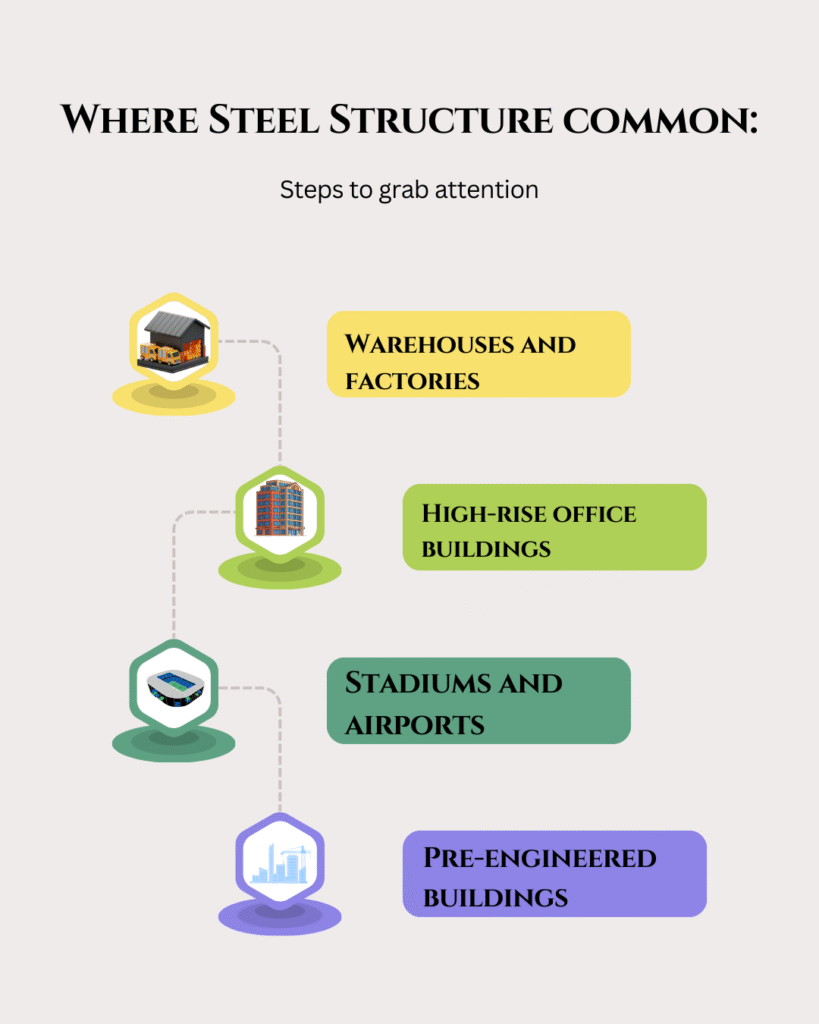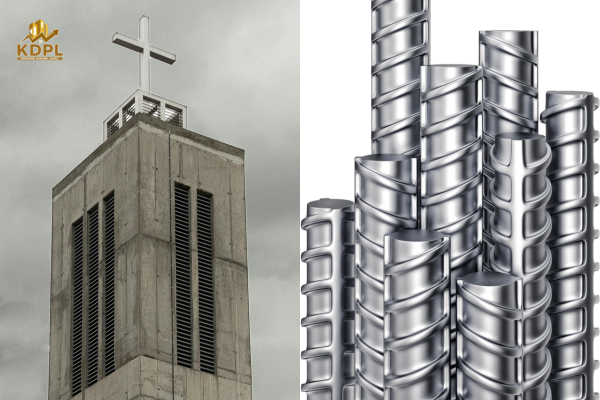When you start planning a new building, one of the first decisions you’ll face is the type of structure to use. Most projects in India today are built using either RCC vs Steel Structures RCC (Reinforced Cement Concrete) or Steel Structures. Both have their own strengths, and the choice depends on factors like budget, design needs, project size, and even how quickly you want the work to finish.
In this article, we’ll explore the differences between RCC and steel structures, their pros and cons, and where each is best suited. By the end, you’ll have a clear idea of which option works best for your project.
What is RCC?
Reinforced Cement Concrete (RCC) is a mix of cement, sand, and aggregate with steel bars placed inside to give the concrete extra strength. The concrete handles compression, while the steel takes care of tension, making it a reliable choice for most types of buildings.
Where it’s used most:
- Homes and apartments
- Schools and hospitals
- Bridges and dams
Medium-rise commercial complexes
What is a Steel Structure?
A steel structure is made with prefabricated steel beams, columns, and other sections that are put together on-site. Instead of pouring and curing concrete, most of the heavy work is done in a factory and assembled quickly on the project site.
Where it’s common:
- Warehouses and factories
- High-rise office buildings
- Stadiums and airports
- Pre-engineered buildings (PEB)

RCC vs Steel Structures – Key Differences
1. Strength and Durability
- RCC: Known for excellent compressive strength. It can handle heavy loads and is fire-resistant.
- Steel: Stronger in tension, lighter in weight, and ideal for tall or large-span structures. Needs protection from rust and fire.
Takeaway: RCC is reliable for homes and regular buildings, while steel is better for large and complex projects.
2. Speed of Construction
- RCC: Takes more time due to curing and on-site work.
- Steel: Much faster because the parts are prefabricated and simply assembled on-site.
Takeaway: If speed is important, steel structures save time.
3. Cost Factor
- RCC: Generally cheaper upfront because raw materials like cement and sand are locally available. Labor costs can add up since the work takes longer.
- Steel: Higher initial material cost, but reduced labor costs due to quicker construction.
Takeaway: RCC works best for cost-conscious residential projects. Steel can be cost-effective for big commercial or industrial jobs.
4. Design Flexibility
- RCC: Strong but rigid. Creating unusual shapes can be costly.
- Steel: Highly flexible, allows modern and creative designs with curves and wide open spaces.
Takeaway: Steel gives architects more freedom, especially for modern projects.
5. Maintenance
- RCC: Needs little maintenance if built well, though cracks and reinforcement corrosion can appear over time.
- Steel: Requires regular checks and treatments to prevent corrosion.
Takeaway: RCC is easier to maintain for homeowners, while steel needs upkeep but offers long-term strength.
6. Lifespan
- RCC: Can last 75–100 years with proper construction.
- Steel: Similar lifespan, but only if protected against rust and fire.
7. Suitability by Project Type
- Residential homes: RCC is usually preferred for cost and strength.
- Industrial buildings: Steel is the clear choice for speed and large spans.
- High-rise towers: Steel dominates globally, though RCC is still used in Indian mid-rise apartments.
Infrastructure (bridges/dams): RCC wins because of massive load-bearing capacity.
What Works Best in Indian Context?
In Indian cities like Lucknow, Kanpur, or Prayagraj, most homes and apartments are built with RCC. It suits local conditions, is budget-friendly, and integrates well with house planning and interior design.
Steel structures are more popular in warehouses, factories, and commercial complexes where speed and scale matter more.
Interiors and Finishing
No matter the structure, interiors make a huge difference. With today’s interior design services and 3D interior design tools, homeowners can visualize living rooms, bedrooms, kitchens, and bathrooms before work begins. RCC provides solid walls for traditional layouts, while steel allows open-plan modern designs.
Pros and Cons in Brief
Factor | RCC | Steel |
Strength | Excellent in compression | Excellent in tension |
Construction Speed | Slower | Faster |
Cost | Lower upfront | Higher upfront |
Design Flexibility | Limited | High |
Maintenance | Low | Moderate |
Ideal For | Homes, schools, bridges | Warehouses, high-rises |
Conclusion
So, which is better—RCC or steel? The answer depends on your project.
- Building a home or apartment → RCC is usually the smarter, cost-effective choice.
- Planning an industrial shed or high-rise → Steel gives speed and flexibility.
- Looking for a balance → Many modern projects now combine both RCC and steel to get the best of each.
FAQs
Which is better for residential homes – RCC or Steel structures?
For most homes in India, RCC is better due to affordability, durability, and ease of construction. Steel is preferred for warehouses or modern high-rise projects.
What is the average home construction cost in Uttar Pradesh?
The cost depends on location, materials, and design. On average, RCC home construction in UP ranges between ₹1,200–₹1,800 per sq. ft., while steel may cost higher initially.
How do steel structures perform in terms of durability?
Steel is strong and flexible but needs regular anti-corrosion and fireproofing treatments. With proper care, steel structures can last 50–100 years.
Can I integrate interior design services with both RCC and Steel structures?
Yes. Whether RCC or steel, interiors such as bedroom design, modular kitchens, and 3D interior design can be seamlessly executed with professional planning.
How can I choose the right structure for my project in Lucknow?
Consult a trusted construction company in Lucknow. They can evaluate your budget, timeline, and design goals to suggest whether RCC, steel, or a hybrid solution is best.
